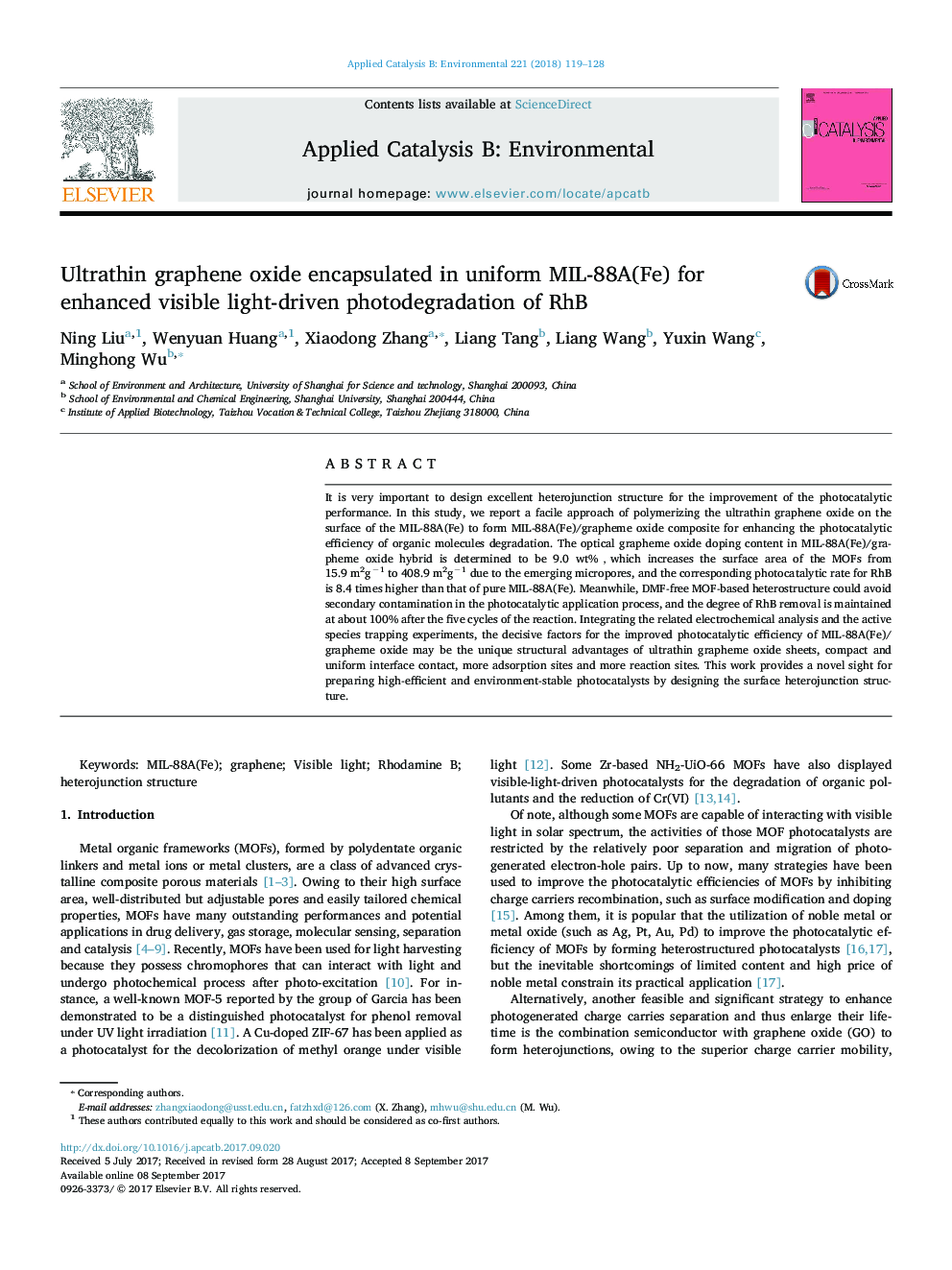| کد مقاله | کد نشریه | سال انتشار | مقاله انگلیسی | نسخه تمام متن |
|---|---|---|---|---|
| 6453402 | 1418799 | 2018 | 10 صفحه PDF | دانلود رایگان |
- One-pot method is used to prepare ultrathin GO encapsulated uniform M88/GO.
- The addition of GO boosts BET which provides more adsorption and reaction sites.
- GO improve light absorption and accelerate the separation of electron-hole pairs.
- DMF-free MOF could avoid secondary contamination in the application process.
It is very important to design excellent heterojunction structure for the improvement of the photocatalytic performance. In this study, we report a facile approach of polymerizing the ultrathin graphene oxide on the surface of the MIL-88A(Fe) to form MIL-88A(Fe)/grapheme oxide composite for enhancing the photocatalytic efficiency of organic molecules degradation. The optical grapheme oxide doping content in MIL-88A(Fe)/grapheme oxide hybrid is determined to be 9.0 wt%ï¼which increases the surface area of the MOFs from 15.9Â m2gâ1 to 408.9Â m2gâ1 due to the emerging micropores, and the corresponding photocatalytic rate for RhB is 8.4 times higher than that of pure MIL-88A(Fe). Meanwhile, DMF-free MOF-based heterostructure could avoid secondary contamination in the photocatalytic application process, and the degree of RhB removal is maintained at about 100% after the five cycles of the reaction. Integrating the related electrochemical analysis and the active species trapping experiments, the decisive factors for the improved photocatalytic efficiency of MIL-88A(Fe)/grapheme oxide may be the unique structural advantages of ultrathin grapheme oxide sheets, compact and uniform interface contact, more adsorption sites and more reaction sites. This work provides a novel sight for preparing high-efficient and environment-stable photocatalysts by designing the surface heterojunction structure.
160
Journal: Applied Catalysis B: Environmental - Volume 221, February 2018, Pages 119-128
